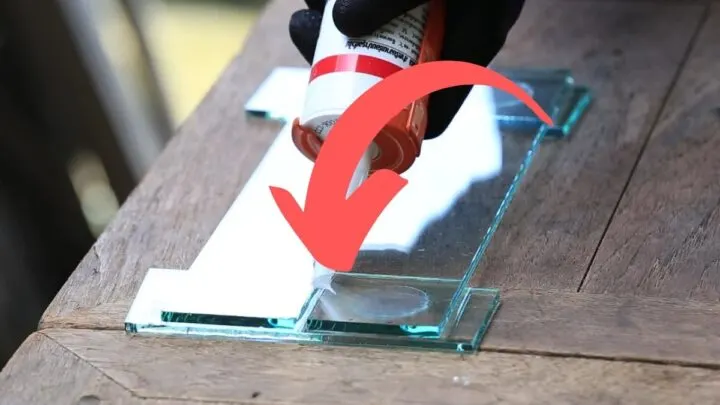Wood artistry is a craft passed that has been passed down from generation to generation. Before nails were invented, carpenters and wood artisans used to join pieces of wood together using calculated cuts and pegging.
Wood glue was also used to hold the wood in place, but this was not very efficient.
Liquid Nails is a heavy-duty construction adhesive that is compatible with wood, plastic, brick, foam, ceramic, marble, and stone. It is best known for its heavy-duty bonding properties and gives a 10-minute working time before it sets in, according to most popular Liquid Nails brands.
Keep reading to learn more about how liquid nails can be effectively used and their potential shortcomings as well!
What Are Liquid Nails?
Liquid nails are a heavy-duty construction adhesive that is compatible with wood, plastic, brick, foam, ceramic, marble, and stone.
It is best known for its heavy-duty bonding properties and gives a 10-minute working time before it sets in, according to most popular liquid nails brands.
However, liquid nails have a 24-hour waiting period before more work can be done on the piece which is one of the few drawbacks of using liquid nails.
Even with that wait in mind, the adhesion offered by wood glue beats all of its shortcomings!
What Are Liquid Nails Used For?
Liquid nails are used for the same purpose as wood glue, although it offers greater versatility in terms of the materials it can bond together.
Bonding
Liquid nails can bond together a diverse range of materials including PVC, ceramic, marble, stone, plastics, and bricks.
While it is most commonly used in heavy-duty construction work, many DIYers have also started using liquid glue for their home projects.
Filling Gaps
Liquid nails can be used for filling in gaps between wood. However, it has been found that wood glue outperforms liquid nails in this work.
This is because liquid nails chip and crack over time, making them less durable than wood glue or sawdust.
How Long Will Liquid Nails Last?
When used for bonding purposes, liquid glue can last longer than wood glue, therefore, it can be called more durable than wood glue.
However, due to their chemical properties, liquid nails, if left exposed to air, lose their durability. This can become a problem when it’s used for filling cracks.
This is the same with regular nails, which lose their strength when oxidized.
Many liquid nails brands claim to have added antioxidants to the formula to increase their strength and durability, but when it comes to filling cracks and gaps, it may still lose its strength over time.

Are Liquid Nails Stronger Than Nails?
Since liquid nails are an adhesive solution, they are stronger and more durable than nails, which only bond and hold together surfaces at a single point.
The strongest liquid nails are also proven to hold 100 pounds on wood and 64 pounds on PVC, which is not a match for flimsy nails, which can easily lose their grip on the material.
Are Liquid Nails The Same As Wood Glue?
One common question is whether liquid nails are the same as wood glue. Some even go on to say that it is an enhanced version of wood glue. However, it is not true.
The chemical composition of liquid nails differs greatly from that of wood glue.
Liquid nails compare in the following ways with wood glue.
1. Versatility
Liquid nails offer better versatility when it comes to the types of materials they can bond with.
Therefore, its applicability goes beyond classic nails or wood glue.
2. Drying Time
If you want to quickly bond things, liquid glue is the one you should choose. This is because liquid nails take about 24 hours to dry completely.
So, you will greatly reduce your efficiency if you are working on a time-bound project.
3. Safety
Liquid nails consist of many chemicals which emit fumes. If you are working with liquid nails, it is recommended that you work in a well-ventilated area.
While experts also suggest using wood glue in a well-ventilated area, it does not have as many fumes as liquid nails.
4. Clean Up
Cleaning up liquid nails adhesive that has dried up on your hands is a daunting task. You need to use petroleum jelly or oil to remove it completely.
On the other hand, wood glue can be easily removed from hands with just soap and water.
5. Sealing Wood Gaps
As mentioned earlier, liquid nails when in contact with air tend to oxidize which causes it to crack and chip over time.
This is not true for wood glue, therefore, the latter is best suited for sealing gaps in the wood.
6. Bonding
Nothing can beat the bonding by liquid nails, not even the toughest adhesives. When compared to wood glue, liquid nails outperform it by a great degree
Do You Have To Use Nails Along With Liquid Nails?
If you are using liquid nails for a project, you do not need to couple it with anything!
Since liquid nails can be used on a variety of surfaces like plastics, stone, and marble, there is no way to use any other adhesive like wood glue or nails.
The functionality of nails is limited to steel or metal and wood only, while the functionality of wood glue is limited to wood.
So, there is no need to use anything else than liquid nails in an effort to strengthen and bond further. Liquid nails are already a very strong adhesive.
Summing Up Liquid Nails
Liquid nails are a strong adhesive and a revolution in the woodworking and construction industry. They have been used for heavy-duty work, but its use has now recently extended to carpenters, woodworkers, marble workers, and DIYers.
Wood glue might be a quick and safe fix when it comes to woodworking. However, liquid nails offer greater versatility and stronger bonding, although it does not quickly dry.


